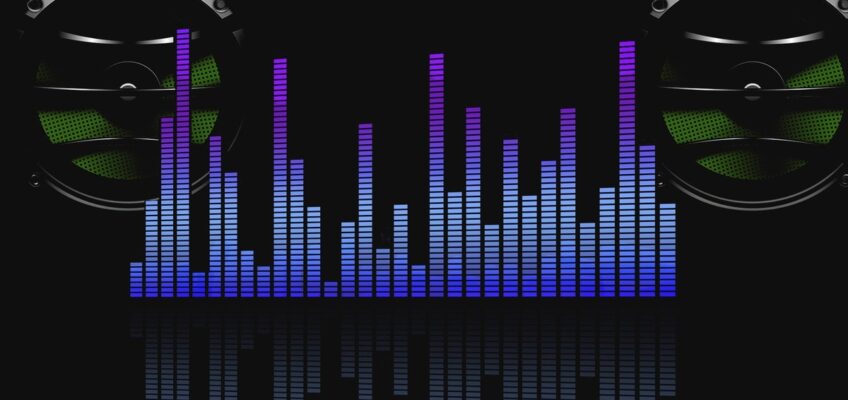By Laura Kobylecky
SXSW is, among many other things, a place where technology and music can come together. The “metaverse” was a popular topic at SXSW 2022. At the “Across the Metaverse: Independent Music in XR” session, speakers discussed how XR and the metaverse might have an impact on independent music makers. Roblox, may be poised to have an impact in this particular space, according to Jon Vlassopulos, Head of Music at Roblox.
The metaverse is a term used to describe an interconnected network of virtual worlds. This term originated in Neal Stephenson’s Snow Crash, a science fiction novel written in 1992. Currently, the term is largely applied to internet-based 3D worlds, sometimes accessed with a VR headset.
Roblox is a popular online gaming platform. It allows people to play games and create games for other people to play. They can explore worlds that other players have built and interact in these online virtual communities. The website (as of December 31, 2021) has 49.5 million daily active users. 52% of them are over 13 and the 17-24-year-old age group is their fastest-growing demographic.
I spoke with Jon Vlassopulos, Head of Music at Roblox, about the role of music in Roblox and some of the future aspirations of the company. There are some parallels between his previous experiences with other media companies and his current visions for Roblox.
PARTICIPATORY MEDIA
Before Roblox, Vlassopulos was a TV producer in the “interactive TV” space. He worked on shows like “Deal or No Deal,” where people would text or call in order to participate in the TV program. This worked for things like, voting on the outcome of something or entering a contest. Vlassopulos refers to this as “participatory media.”
This participatory media expanded on the idea of people getting to be a part of the show. Vlassopulos described how they would do “live callouts” to people who were interacting with the show via their chat lines or websites.
Back when he was working in interactive television, he had firsthand glimpses of the power of live interaction. He tells the story of a man called “Tommy55” who was really active in the chat rooms of a TV show. He was fascinated by the host of the show and the host responded by doing shoutouts on live TV or responding to requests. This kind of interaction made the chatrooms (and ratings) go crazy and they demonstrated the power of making people feel like they are part of the show.
Vlassopulos explained that, over time, people drifted out of this space. The advent of apps and smartphones, “fragmented” this marketplace because they were “trying to do it all” while needing a separate app developed for every system and marketplace, as opposed to “a single call in who’s good for 95% of the audience.”
However, Netflix’s interactive movie, Bandersnatch, came along and reinvigorated the concept of interactive media, from his perspective. It, once again, seemed like a particularly viable space. So, when Roblox approached him, Vlassopulos was intrigued by their potential and how they engaged in participatory media.
He describes Roblox as an “interactive full platform” with an “underlying economy.” From his perspective, this interactive world was “a platform at scale that was under the radar” and that made it an ideal place to “insert music” and allow “the next era” of the music business.
MUSIC IN ROBLOX
This leads to the value of Roblox for live concerts. They could build virtual venues that leverage the interactive qualities of their platform. Vlassopulos uses “the metaphor of a city” to describe the potential of music in a Roblox environment. He explains that they could use concepts of “real-world city planning” to incorporate music venues into the Roblox social environment.
He explains that these virtual venues could be avenues of discovery for music. He compares this to the early days of the Meatpacking district in New York. Sporadic events would happen and over time “a community built around it and it became more cohesive.” This sort of organic growth could be facilitated in the Roblox platform as people create “live music” experiences there that may eventually lead to more permanent virtual venues.
They need not be “intense concert experiences,” according to Vlassopulos. He describes the possibility of hanging out at the virtual equivalent of “your mate’s house in Brooklyn” where you might be subject to that friend’s musical curation. You might play games together while being exposed to your friend’s virtual playlist. Vlassopulos expands on the idea that playlisting in a virtual space may be more interactive and playful and allow for more voices in the music curation space.
Vlassopulos sees the potential for label interest in this kind of growth. The labels may, in his vision, come in to create custom venues for their artists. They might have more immersive brand experiences in the space. Eventually this kind of growth could lead to an environment that resembles some of the organic qualities of “real venues.”
Vlassopulos describes an event they had with Poppy, an artist on Sumerian Records. He explains that they worked to have a cost-effective experience that combined her “music and artwork.” They created 9 top Roblox “bespoke” experiences with her music playing in the background that coincided with her album drop.
Fans responded to this with a 241% growth in Poppy’s official Roblox group and over 6 million listens across the day of release and the following weekend. This experience also included “Free Flux “verch” (virtual merch) items were offered in the Avatar Shop” and these verch items were obtained by 10.5 million users.
Vlassopulos describes this event as “playing matchmaker.” He sees potential in artist growth for connecting game devs with artists to create these collaborative experiences. This kind of experience could be particularly valuable to independent artists as a way of expanding their reach. He envisions a world where independent artists “who were open to doing this” could have a “bigger listening party network”.
He describes this as a “new Renaissance of artist creativity” and believes artists “with the tools on the platform” could be like “TV producers or filmmakers and allow people to participate in the world that they create.” He sees this as a way for artists to expand their creative world-building beyond the limits of liner notes, which are a rarity in the world of streaming-based consumption. Vlassopulos insinuates that this kind of media may give TV and film “a run for their money” and could serve as an alternative to scripted content.
In Vlassopulos’ vision, an artist may choose virtual events as an alternative or addition to live events. The artist doesn’t have to wear their fancy “lycra jumpsuit” to perform. They could wear a mocap suit and give a performance that would play to “millions of people from around the world.” These millions could interact with the performance online, like a more advanced version of the participatory media of yesterday.
Another potential benefit of this is an increase in quality of life for the artist, according to Vlassopulos. If the artists don’t have to play stadiums they could play smaller, more intimate venues for a live audience while streaming the event to a virtual venue. Or they might be able to avoid touring entirely if they needed to create a more healthy balance between touring and building their own lives. Another bonus Vlassopulos mentions is a reduced “carbon footprint for artists.”
Vlassopulos says that “We want to have more artists be able to make 20 grand a month, 20 grand a year, 30 grand a year, like a living wage.” He sees the virtual venues as something that could help make that happen. The virtual venues provide another avenue of revenue in the form of “virtual merch.” These virtual items can be collected and worn inside of the virtual space and they would serve as an easily-scalable source of revenue for artists in a time when relying on streaming revenue may not be enough.
The virtual venues could also provide a social element. Vlassopulos mentions that after you “buy the ticket, there’s this sort of silence,” while you anticipate the concert. He has a vision that a ticket, live or virtual could come with access to a virtual venue. You could hang out in the space with other fans and get to know people before the concert. After the concert. you might retain access and continue to connect with other fans to reflect on the experience.
However, with all that connection and interaction, one might wonder, what kind of rules will exist in these virtual venues? As the virtual space begins to resemble “real life” at what point will the problems of the real world seep in as well. Will the virtual venues start requiring IDs or an “X” on the hand of the underaged attendees?
Roblox will be faced with unique challenges as they continue down the road of replicating the particular magic of a live music experience. These questions will no doubt continue to be relevant as interest in the metaverse grows.
For now, we can anticipate that Roblox is taking steps to add music to the metaverse. Perhaps your new favorite venue will be online.










